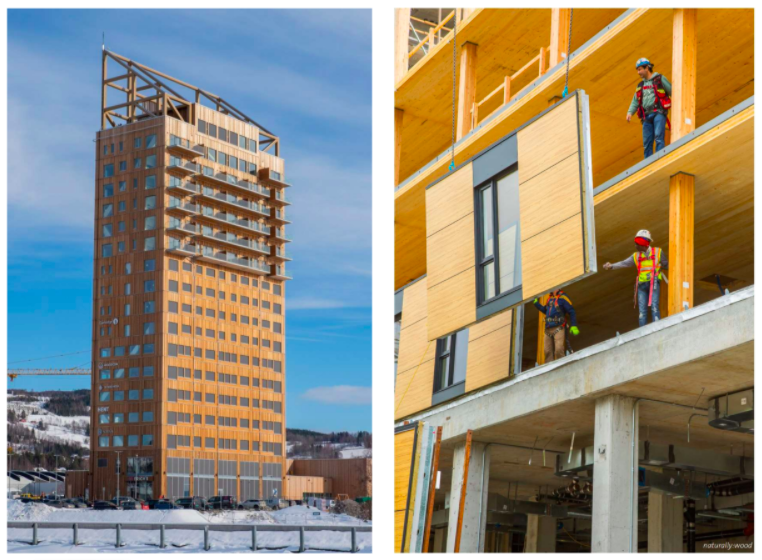NOEL KRISTEN COCHON, MBSc
Towards Quantifying The Air Leakage Through Cross-laminated Timber
Read the full Master Research Paper HERE.
As cross-laminated timber (CLT) gains popularity in the design of high-performance buildings, it is important to understand the best practices in its use in aspects towards ensuring building performance – such as airtightness. This study aims to contribute to limited research evidence for evaluating air leakage through Canadian manufactured CLT. The research objective is to characterize and quantify air leakage paths across CLT panels and evaluate the impact of additional air barrier system components to CLT. Through experimental testing of various panel parameters, metrics including the air leakage rate, normalized equivalent leakage area, as well as the flow exponent and flow coefficient were assessed, and leakage rates determined were compared to requirements for air barrier assemblies. For the 3-ply and 5-ply CLT panels utilized in research, significant air leakage through panel edges compared to air leakage through the panel face was observed due to unglued edge joint gaps typical to Canadian manufactured CLT. Further, sealing panel edges with an effective air barrier such as a self-adhered membrane to reduce air leakage from 4 - 12 L/sm2 to 0.09 - 1.4 L/sm2 was not enough to meet more stringent thresholds for air barrier assemblies at 0.1 L/sm2 at a 75 Pa pressure differential. Understanding air leakage across CLT is important to the continuous development of design and construction practices towards ensuring the performance of CLT buildings.
Towards Quantifying The Air Leakage Through Cross-laminated Timber
Read the full Master Research Paper HERE.
As cross-laminated timber (CLT) gains popularity in the design of high-performance buildings, it is important to understand the best practices in its use in aspects towards ensuring building performance – such as airtightness. This study aims to contribute to limited research evidence for evaluating air leakage through Canadian manufactured CLT. The research objective is to characterize and quantify air leakage paths across CLT panels and evaluate the impact of additional air barrier system components to CLT. Through experimental testing of various panel parameters, metrics including the air leakage rate, normalized equivalent leakage area, as well as the flow exponent and flow coefficient were assessed, and leakage rates determined were compared to requirements for air barrier assemblies. For the 3-ply and 5-ply CLT panels utilized in research, significant air leakage through panel edges compared to air leakage through the panel face was observed due to unglued edge joint gaps typical to Canadian manufactured CLT. Further, sealing panel edges with an effective air barrier such as a self-adhered membrane to reduce air leakage from 4 - 12 L/sm2 to 0.09 - 1.4 L/sm2 was not enough to meet more stringent thresholds for air barrier assemblies at 0.1 L/sm2 at a 75 Pa pressure differential. Understanding air leakage across CLT is important to the continuous development of design and construction practices towards ensuring the performance of CLT buildings.
